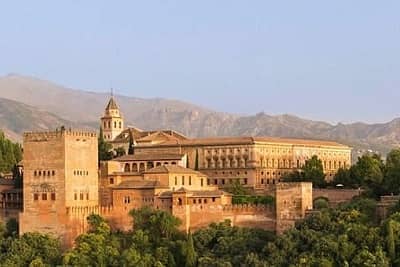Medina Azahara - The Zenith of the Caliphate of Cordoba
Medina Azahara is one of the many places of interest that we visit on our Historic Andalucia cycle tour.
It may not be as well known as the Alhambra Palace in Granada, but Medina Azahara is a must visit for history lovers.
Situated just a few kilometres from Cordoba, Medina Azahara (meaning beautiful town in Arabic) was built in the 10th century as the capital of Muslim Spain. It was designed as a palace city for the Caliph of Cordoba - Abd al Rahman III, one of the most powerful rulers of the Middle Ages. In this article we will take a short look at the history of the building and what it represented.
For more information about how they did this, check out our article about Al Andalus & the Birth of Muslim Spain.
The centre of the caliphate was the valley of the Guadalquivir River, with the city of Cordoba forming the capital. By 912, when Abd-al-Rahman III became the first caliph (effectively an emperor), Cordoba was the most populous city in the world, and the most influential in Western Europe.
Around 20 years into his rule, Abd-ar-Rahman III wanted to build a new capital just outside Cordoba. This palace city was to be a symbol of the power of the Caliph, and was to demonstrate the superiority over rival influences in the region.
The new capital was Medina Azahara, a lavish complex constructed in the foothills of the Sierra Morena mountains, which included government buildings, residences and mosques. The splendour of Medina Azahara has led some historians to label it as the Versailles of the Middle Ages.
Medina Azahara was the pinnacle of architecture from this period. It incorprated the muslim style of Cordoba with the existing Roman infrastructure in the area; indeed, the caliphate extended the existing network of aquaducts to create running water throughout the new city.
There are various contemporary accounts of the luxurious nature of the city. Some refer to pools of mercury reflecting the sun extravagantly across the walls, while others refer to large constructions of gold and ivory dominating areas of the city.
The city, aside from being a show of wealth and power, was functional. As well as running water, it housed many important administrative functions, and a large barracks and a mint. In addition to the lavish buildings there were also several gardens which were intricately designed with exotic vegetation.
In 1010, Medina Azahara was looted and partially destroyed in a Civil War. Berbers, which had been brought in to help the Caliphate fight against the advancing Christians, revolted against the Caliphate and looted many of the cities, including Medina Azahara.
Over the following years, the city became superfluous to requirements, given its location close to the increasingly thriving Cordoba. The city gradually became buried and excavation did not begin on the remains until 1910.
The destruction started the decline and eventually end of the most influential Muslim culture in Europe. However, the legacy left by the Caliphate - including paper, translation of great literary works, algebra and architectural advances - has had a profound impact on European culture in the years since.
Legends of the Medina Azahara may well have helped to influence the design of other great buildings of the era, such as the Alhambra palace in the nearby city of Granada.
The site today is open for visitors to walk around; getting close to the buildings really provides a feel of the scale and grandeurof what Medina Azahara must have been like in its prime.
There are plans to excavate the remainder of the site, but such is the large size of Medina Azahara that it will take many years to complete.
We visit the Medina Azahara on our cycling tour through Andalucia; a tour which combines the amazing scenery in the region with the historic legacy in Seville, Cordoba and Granada. Find out more about this tour and others in the area by browsing the itineraries linked to below.
Situated just a few kilometres from Cordoba, Medina Azahara (meaning beautiful town in Arabic) was built in the 10th century as the capital of Muslim Spain. It was designed as a palace city for the Caliph of Cordoba - Abd al Rahman III, one of the most powerful rulers of the Middle Ages. In this article we will take a short look at the history of the building and what it represented.
History of Al Andalus
Shortly after 700 AD, the muslim conquest of southern Spain brought to an end the Visigoth rule of the Iberian peninsular. By 1000 AD, the muslim sphere of influence had extended to cover most of Spain and Portugal; only the northern areas of the peninsular (present day Galicia, Leon, Asturias, Cantabria, Basque Country and Navarra) remained independent of the powerful Caliphate of Cordoba.For more information about how they did this, check out our article about Al Andalus & the Birth of Muslim Spain.
The centre of the caliphate was the valley of the Guadalquivir River, with the city of Cordoba forming the capital. By 912, when Abd-al-Rahman III became the first caliph (effectively an emperor), Cordoba was the most populous city in the world, and the most influential in Western Europe.
Around 20 years into his rule, Abd-ar-Rahman III wanted to build a new capital just outside Cordoba. This palace city was to be a symbol of the power of the Caliph, and was to demonstrate the superiority over rival influences in the region.
The new capital was Medina Azahara, a lavish complex constructed in the foothills of the Sierra Morena mountains, which included government buildings, residences and mosques. The splendour of Medina Azahara has led some historians to label it as the Versailles of the Middle Ages.
Beautiful Medina Azahara
Medina Azahara was the largest city ever to be built from scratch in Western Europe, and no expense was spared in its construction. The centrepiece of the city was the reception area of the palace, a vast construction designed to strike awe and fear into visitors to the Caliphate.Medina Azahara was the pinnacle of architecture from this period. It incorprated the muslim style of Cordoba with the existing Roman infrastructure in the area; indeed, the caliphate extended the existing network of aquaducts to create running water throughout the new city.
There are various contemporary accounts of the luxurious nature of the city. Some refer to pools of mercury reflecting the sun extravagantly across the walls, while others refer to large constructions of gold and ivory dominating areas of the city.
The city, aside from being a show of wealth and power, was functional. As well as running water, it housed many important administrative functions, and a large barracks and a mint. In addition to the lavish buildings there were also several gardens which were intricately designed with exotic vegetation.
Collapse of Medina Azahara
After the death Abd-ar-Rahman III's son, Al-Hakam II, Medina Azahara ceased to be used as the capital of the Caliphate. A leading advisor named Al-Mansur assumed effective power after and decided to build his own, even more extravagant palace city near to Medina Azahara. Al-Mansur wanted to leave his name in history like Abd-ar-Rahman III, but the new complex was burnt to the ground shortly after being constructed and has left no archaeological trace.In 1010, Medina Azahara was looted and partially destroyed in a Civil War. Berbers, which had been brought in to help the Caliphate fight against the advancing Christians, revolted against the Caliphate and looted many of the cities, including Medina Azahara.
Over the following years, the city became superfluous to requirements, given its location close to the increasingly thriving Cordoba. The city gradually became buried and excavation did not begin on the remains until 1910.
The destruction started the decline and eventually end of the most influential Muslim culture in Europe. However, the legacy left by the Caliphate - including paper, translation of great literary works, algebra and architectural advances - has had a profound impact on European culture in the years since.
Legends of the Medina Azahara may well have helped to influence the design of other great buildings of the era, such as the Alhambra palace in the nearby city of Granada.
Medina Azahara Today
Today, it is estimated that only about ten percent of the vast city has been excavated. This area includes the central palace area, with the reception hall, some large administrative buildings and a mosque.The site today is open for visitors to walk around; getting close to the buildings really provides a feel of the scale and grandeurof what Medina Azahara must have been like in its prime.
There are plans to excavate the remainder of the site, but such is the large size of Medina Azahara that it will take many years to complete.
We visit the Medina Azahara on our cycling tour through Andalucia; a tour which combines the amazing scenery in the region with the historic legacy in Seville, Cordoba and Granada. Find out more about this tour and others in the area by browsing the itineraries linked to below.
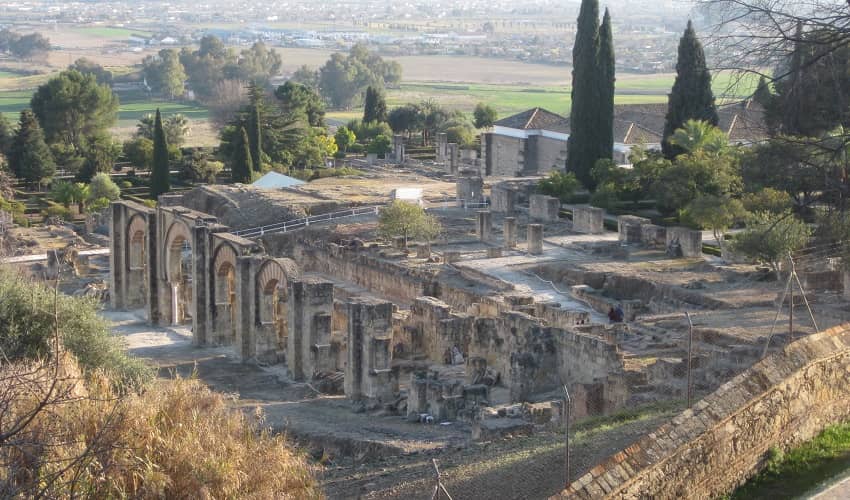
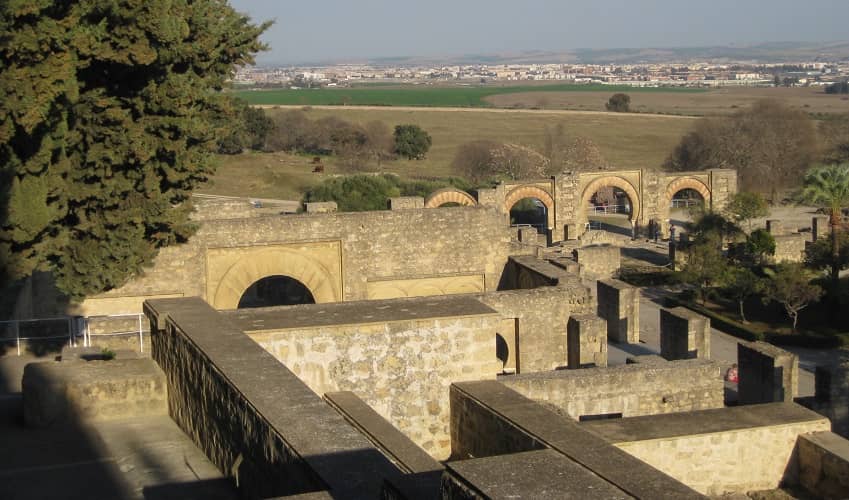
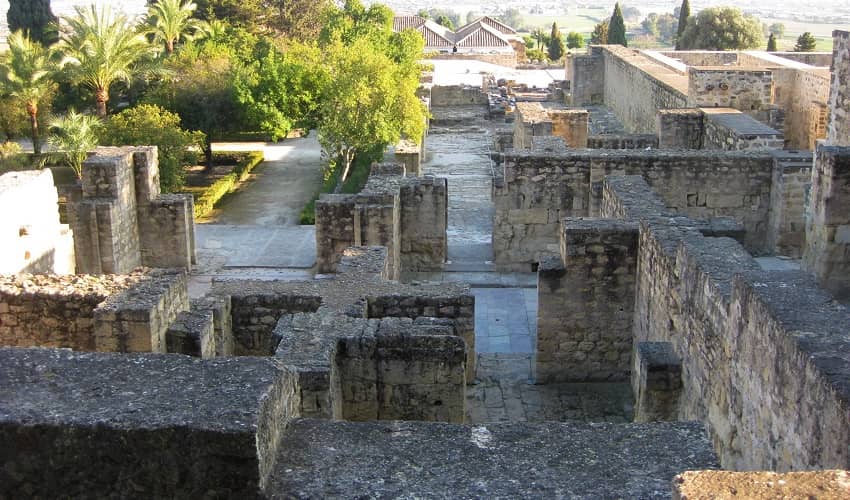
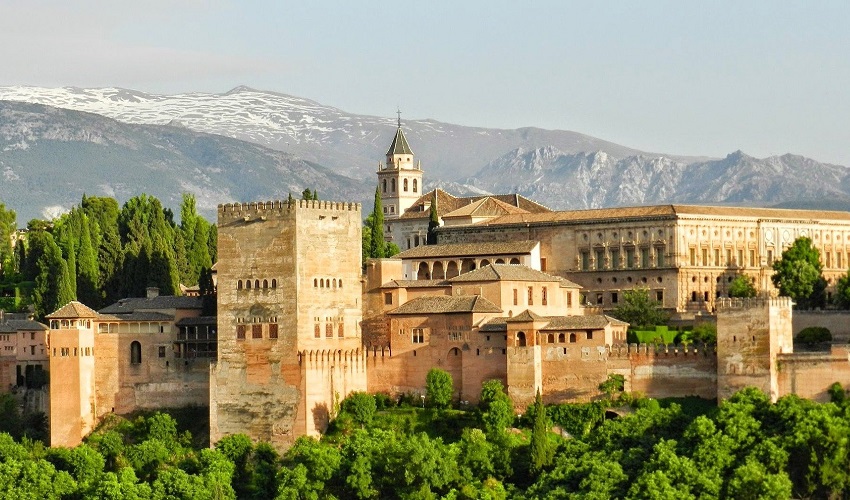

 Spain
Spain
